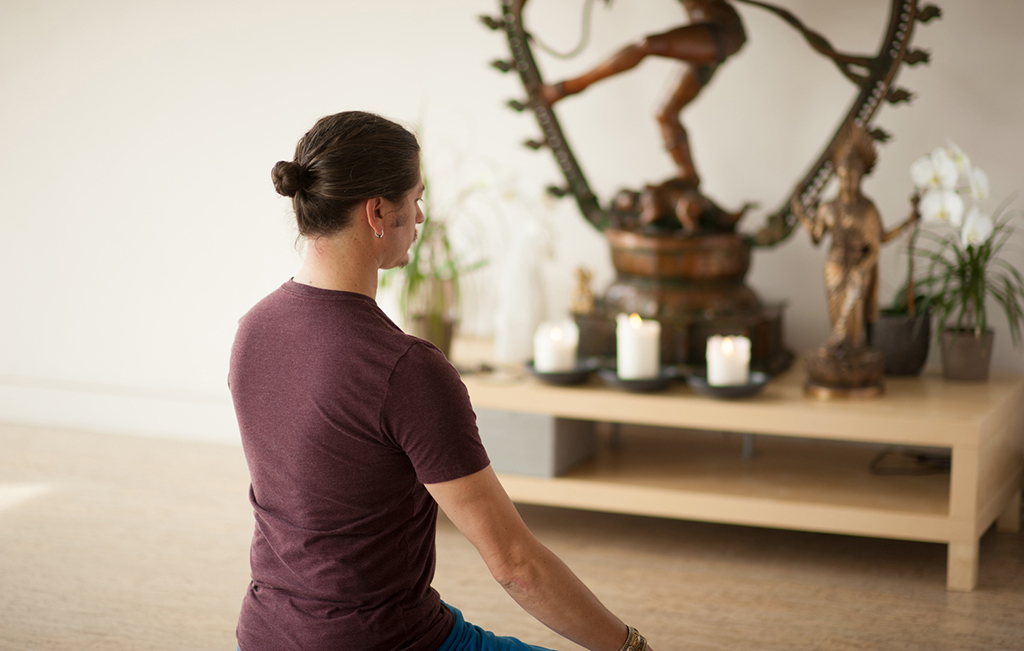
When I think of mindfulness practice, a quote by B.K.S. Iyengar often comes to mind:
“It is through the body that everything comes to the mind. It is through and with your body that you have to reach realization of being a spark of divinity. How can we neglect the temple of the spirit?” — B.K.S. Iyengar (Sparks of Divinity, Shambhala Publications)
When I first read Iyengar’s quote many years ago I interpreted this way: It is through our practice of asana, at those times when we lose the struggle and become the asana, that we see into our true nature, the undefined spaciousness that connects us all. This still rings true for me. Asana, if we practice with complete commitment to being fully in each moment, can offer a glimpse into the the free and settled mind that is intrinsic to all of us.
Why Body Awareness is Key to Mindfulness
Quite often, people who practice mindfulness have interpreted the body as being somehow subservient to the mind. But as the years have passed, I’ve come to realize that awareness of the body is the key to the freedom of the mind. In the Satipatthana Sutta, the Buddha’s discourse on the Four Foundations of Mindfulness, the Buddha lists mindfulness of the body as the first foundation. That is because it is through our bodies—specifically all our senses—that we experience literally everything.
The body is not just a gross vehicle that transports our minds from one place to another. The body is the window to everything we experience—everything. We perceive the world around us through our bodies, through sight, hearing, smell, taste and touch. Everything we encounter, whether or not we’re conscious of it—registers as a sensation in our bodies. If we are ever to be mindful, we must drop below the level of thinking about our experience to being directly present with our actual experience. In order to do this, we must direct our simple attention to our bodies.
If You’ve Got a Body, You Can Be Present
Here’s another point: Our bodies are always in the present. They cannot be otherwise. If you want to be present, tune into your body.
It’s incredibly simple, but it’s not so easy. Most of us have spent most of our lives living in our thoughts. As anyone who has sat down to meditate knows, our minds are constantly flitting from one thought to another like the Buddha’s proverbial metaphor, a wild monkey leaping from tree to tree.
Even thinking has its own physical sensations. We can tune into these sensations and propel ourselves right back into the present, even when the thought tapes are running at full volume. So when you notice you’re lost in thought, try this: Don’t try to banish the thoughts. Just let them be. Instead, shift your awareness away from the tale your thoughts are weaving to whatever sensations arise in your body while your mind is running wild.
Mindfulness of the Body
Through our sense experiences, we connect directly to each moment. In each moment that we fully connect, we are temporarily free of the thoughts and beliefs that disconnect us from our true nature. And the best thing about this is that we all have one; living in a body is not just for the privileged few. It doesn’t matter whether we’re old, young, small, large, healthy or unhealthy.
In his classic book, Being Peace, Thich Nhat Hanh suggests a body awareness meditation based on these phrases:
Breathing in, I calm my body.
Breathing out, I smile.
Dwelling in the present moment
I know this is a wonderful moment.
Here’s a link to more info about this wonderful practice. Reflect on how fortunate you are to live in this body. It does take you from one place to another. It gives you access to everything that is without and everything that is within. And through it, you just might realize you are a spark of divinity.
